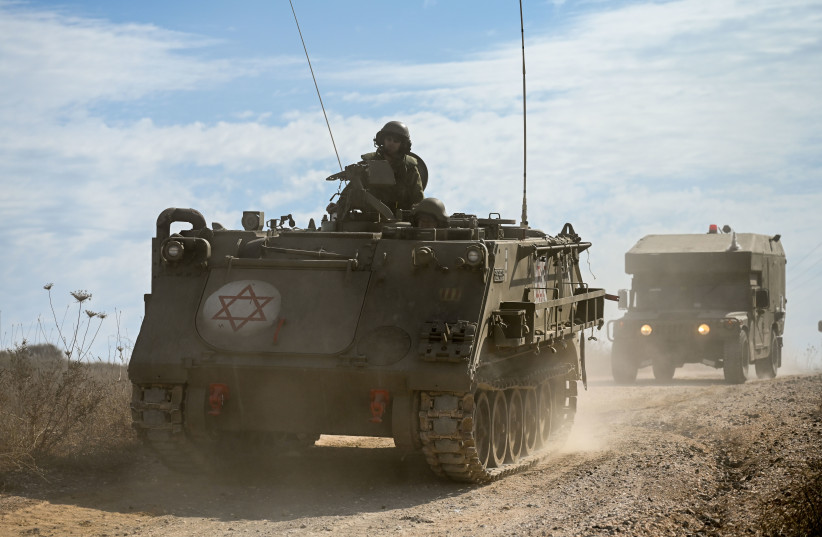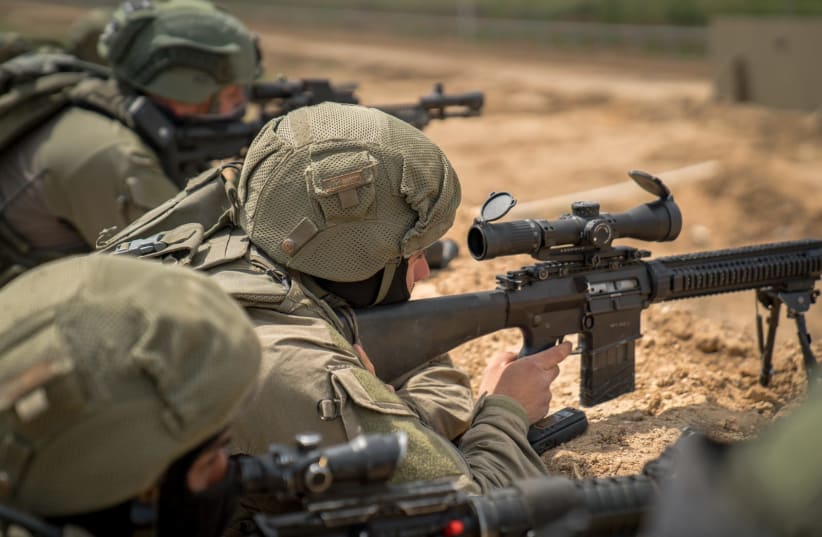Israel is in the midst of a difficult war with Hamas after the terrorist group committed unspeakable crimes in a massive attack on October 7. However, Israel’s challenge today extends far beyond defeating Hamas, primarily to keep the war from expanding to the North and spilling into the West Bank, and the looming challenge of keeping Iran from exploiting the conflict to its benefit.
This means that Israel must define several strategic objectives as it continues to fight Hamas.
The first and most obvious: Israel needs to spell out what its goals in Gaza are. While some, such as the mayor of Sderot, have called for toppling Hamas, it is not clearly such for Israel’s leadership. This has left many in doubt about what Israel is actually doing in Gaza now, with the bombing campaign aimed at Hamas targets, but without clarity about the next phase.
The second: Israel must manage the Hezbollah threat, which has only grown to the North. Before October 7, infiltration incidents along the border would be considered serious, including rocket fire and anti-tank fire. Yet, over the last year, Hezbollah has normalized these attacks.
After the US-backed gas deal, Hezbollah felt empowered and believed it could do whatever it wanted, because it could be assured Israel would not respond. What followed was the pitching of tents in disputed areas, rocket fire, and other incidents. Each time, there was a proportionate response, which allowed Hezbollah to dictate the tempo and initiative. Israel was never the initiator; it always waited.
Hezbollah and Hamas are backed by Iran, which means that these conflicts are not occurring in a vacuum; one influences the other. In 2006, Hamas attacked Israel from Gaza and kidnapped Gilad Schalit, then watched closely Israel’s ponderous response – trading him for more than 1,000 convicted terrorists, many of whom went back to murdering Israeli civilians – and decided to attack in a similar fashion.
The Second Lebanon War – which harmed both Israel and Lebanon – was the result. In 2000, Israel withdrew from Lebanon, and the Palestinian leadership took a lesson from this, believing if it launched a new intifada, Israel would withdraw from Gaza and the West Bank. It is plausible that Israel’s reactions fueled hopes that Israel could be defeated. For instance, before the 2006 war, there was a drumbeat of war, with many short tit-for-tat incidents in the North.


The strategy moving forward
Israel has to create a strategy that understands the linkage and can defeat both problems; the Hamas attack showed Hamas is an existential threat now, not a small threat to be contained. Hezbollah, which Israel believes is the larger threat, meanwhile has not appeared deterred.
Lastly Israel has to deal with the threats from the West Bank. Although mostly quiet, there are threats by Palestinian Islamic Jihad and other groups.
The main center of the octopus of these threats is Iran. Has Iran been deterred by Israel or the US? This is a strategic question, because Iran may seek to mobilize militias in Iraq and Syria or exploit the conflict in Gaza by moving more weapons into Syria. Israel has waged a “campaign between the wars” to stop Iran’s entrenchment in Syria. However, it appears to have been as unsuccessful as managing the Gaza or Hezbollah threats.
Now, Israel has to also plan for a strategy with the Abraham Accords countries as well as Saudi Arabia. It is unclear whether Israel’s position has been eroded in terms of how it has been seen as a strong country in the region. Hamas may be a terrorist group like the Houthis or others, but terrorist groups should not be able to invade a country like Israel, slaughter more than a thousand people, and and destroy 20 communities that had to be evacuated.
Elsewhere, Israel-Turkey reconciliation appears to have led Ankara to believe it can also exploit this situation. Along with Ankara’s ally Qatar, both of which are close US allies, there is an attempt to exploit the Hamas attack and broker hostage deals that will empower Doha and Ankara, but will make Israel appear to be at a loss to get its people back.
Doha already did this with the Taliban, cementing them in power via brokering a deal with the US. It also did this with a recent deal paying Iran $6 billion for the release of six hostages. Israel’s leadership invested in reconciliation with Ankara and also having amicable relations with Russia, due to Moscow’s involvement in Syria. It’s not unclear whether that paid off.
In addition, the diplomatic initiatives in the region mean that Israel is now seen as the chaotic player in the region, in contrast to the era from 2011 to 2022, when other countries such as Iraq or Syria seemed more chaotic. Israel has to get out in front of this strategic dilemma quickly.
